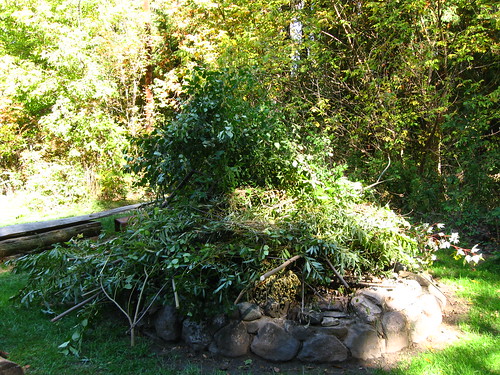


Thanks! ...and feel free to come out again to do some more work. ;)



Vavrus, an expert on the arctic climate, says the dramatic melting trend is due to rising concentrations of greenhouse gases in the atmosphere warming the planet. He says natural variability may have accelerated the loss of ice in recent years, and he adds that the far north has physical characteristics that make it more sensitive to warming than other parts of the globe.What this means is that we can expect more weather patterns like what we saw this year: warmer winters, warmer springs, warmer summers, less rain on average, more rain in concentrated events, sudden cold snaps; you know: nothing like it used to be.
For one, he explains, snow and ice that normally cover the region reflect most incoming solar radiation back to space, but increased melting exposes land or ocean water that absorb more solar energy and accelerate any warming trend.
In addition, the lowest layer of the atmosphere in the Arctic is thin and prone to temperature inversions that hold warmer air near the ground, promoting even more melting as the region warms.
Vavrus says the Arctic is likely to continue to see pronounced downward trends in sea ice, snow cover, glacier extent, and permafrost. He says that will have major impacts on both natural ecosystems and human communities in the northernmost latitudes.
But the impacts of a warming Arctic could also be felt far beyond the region, including in the Midwest, according to research conducted by Vavrus and his colleague Jennifer Francis at Rutgers University published in the journal Geophysical Research Letters last spring.
"We believe that the winds aloft at the level of the jet stream will weaken and lead to slower-moving and 'wavier' atmospheric circulation patterns," he explains. "Such a change would favor more extreme weather events in middle latitudes, such as heat waves, droughts, floods, and—ironically—cold snaps."